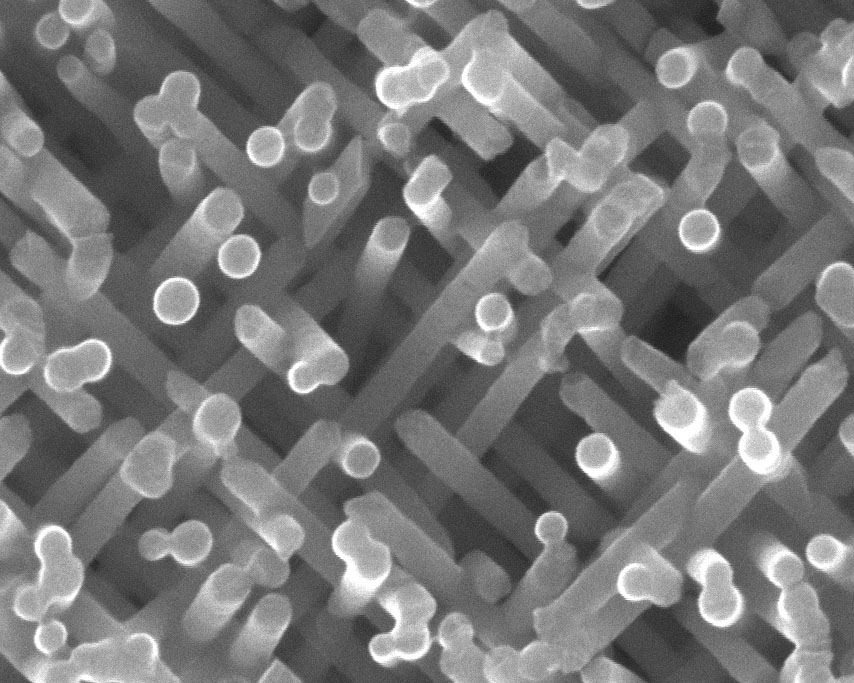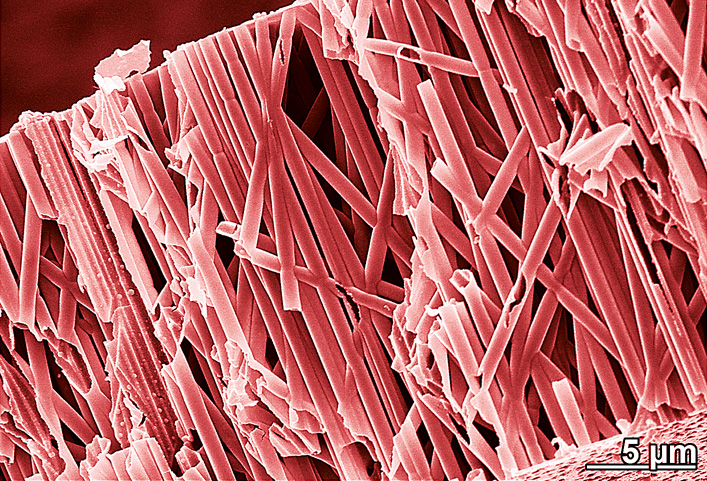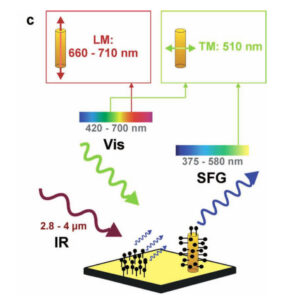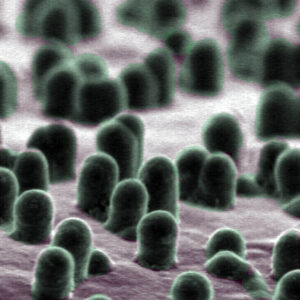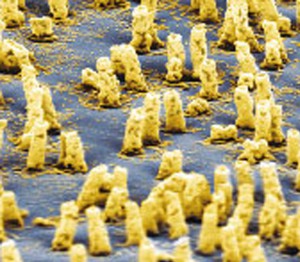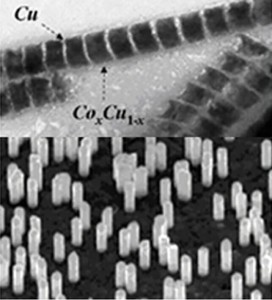R&D projects
it4ip is involved in R&D projects, sharing its knowledge and experience in track-etching with scientists and engineers from clients, universities, research centers and corporate partners.
We are committed to add significant value to our client projects by our participation as coordinator, partner or subcontractor in R&D projects.
We base collaboration on trust. We deliver with consistency and follow a strict confidenciality policy.
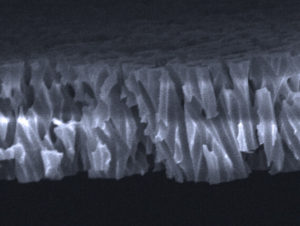
Very porous track-etched membrane filters
Although the maximal porosity of a standard track-etched filter is around 20%, under specific conditions, track-etching technology can be adapted to the manufacture of filters having a porosity above 40%.
Despite their high porosity, these track-etched filters keep a good selectivity and a mechanical resistance adequate for their use in filtration device requiring high flow rates.
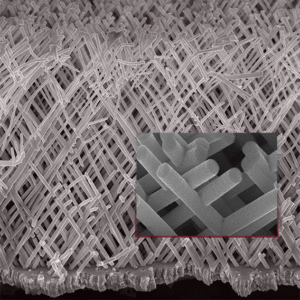
Selectively tilted pores
Beaming parameters can be finely tuned in order to manufacture pores with well-defined angles; such porous structures are well suited to form mechanically stable and self-supporting large arrays of 3D functional networks of interconnected nanotubes or nanowires.

Membranes with intrinsic surface properties challenging with cell cultures
New track-etched membranes suitable as support for cell culture and including surface properties: optimized for cell adhesion, growth and differentiation; stable over times and homogeneous from lot to lot.
Solvent resistant polycarbonate-based membrane filters
Solvent-resistant PC membrane filters show a 15 % max. weight loss after 24 hours of contact with pure toluene, while other PC membranes currently on the market are rapidly dissolved.
Self-supported 3-dimensionally interconnected nanotubes and nanowire
Use of track-etched membrane filter as a versatile template-aced fabrication method for growing of large arrays of three-dimensionally interconnected nanowire or nanotubes with easily tunable geometrical dimensions and spatial arrangement.
Artificially modified magnetic anisotropy in interconnected nanowire networks
Nanowire networks for lithium microbattery architectures
Polypyrrole nanotubes and nanowires for highly sensitive chemiresistive gas sensing
Free-Standing Networks of Core−Shell Metal and Metal OxideNanotubes for Glucose Sensing
Selective plasmic platforms
The enhancement of the vibrational sum-frequency generation (SFG) signal from molecules adsorbed on metallic nanopillars excited at a resonance frequency matching their localized surface plasmons is reported. The nano pillars stand vertically on a metal surface and possess two plasmon modes that can be selectively excited by either the incident visible laser beam, or the generated SFG beam itself. This nanostructured platform increases the molecular SFG signal of a monolayer by two orders of magnitude.
Owing to the largely improved sensitivity combined with a specific spatial selectivity, plasmon-enhanced SFG boosts the versatility of second-order vibrational SFG spectroscopy or microscopy. This makes them promising platforms in the development of analytical molecular devices.
Nanopillars to Enhance Vibrational Sum-Frequency Generation Spectroscopy
Electrically controlled release from nanostructure electrodes
One of the key challenges to engineering neural interfaces is to reduce their immune response toward implanted electrodes. One potential approach to minimize or eliminate this undesired early inflammatory tissue reaction and to maintain signal transmission quality over time is the delivery of anti-inflammatory biomolecules in the vicinity of the implant. Here, we report on a facile and reproducible method for the fabrication of high surface area nanostructured electrodes coated with an electroactive polymer, polypyrrole (PPy) that can be used to precisely release drug by applying an electrical stimuli.
Complex-oxide nanostructure from a sol-gel-based polymer-precursor solution
Track-etched polymer fabrication, which is nowadays a large-scale industrialized process, can be easily implemented to specific substrates for further growth of low-cost, large-scale, vertical oxide nanostructures by the use of proper solution-based methods.
Many applications may be realized using vertical nanostructures; the composite system presented here, formed by a metallic and magnetic LSMO layer with insulating and nonmagnetic oxide nanopyramids, has been used to induce artificial pinning centers in superconducting YBa2Cu3O7 films.
Vertical (La,Sr)MnO3 Nanorods
Molecular sieve nanowires with high temperature ferromagnetism
Chemical synthesis of oriented ferromagnetic oxide nanowire
Functional complex oxide nano materials on silicon
Nano-objects with specific properties
Templated growth within track etched material is efficient for production of arrays of controlled metallic – single (Co, Ni, Au), alloys (CoFe, NiFe), multilayered (Co/Cu) – or polymeric – light emitting polymers – nanoobjects.
These nano objects are characterized by specific optical, magnetic and chemical properties:
- spin dependent phenomena – GMR, TMR, … – in magnetic nanoobjects with potential application in sensor;
- microwave properties of ferromagnetic nanowire arrays with possibility to make circulators operating at various frequencies;
- confinement of optical field into a micro-cavities and to increase the spontaneous emission rate of light emitting polymers;
- pure magnetic (Ni), pure gold and bilayered Ni/Au nanowires for bio-applications using microfluid devices.
Giant magnetoresistance in magnetic multilayered nanowires
Engineered nano-objects for use in microwave, electronic devices and biomedical sensing application
Magnetic photonic band-gap material at microwave frequencies
Organic light-emitting diodes


